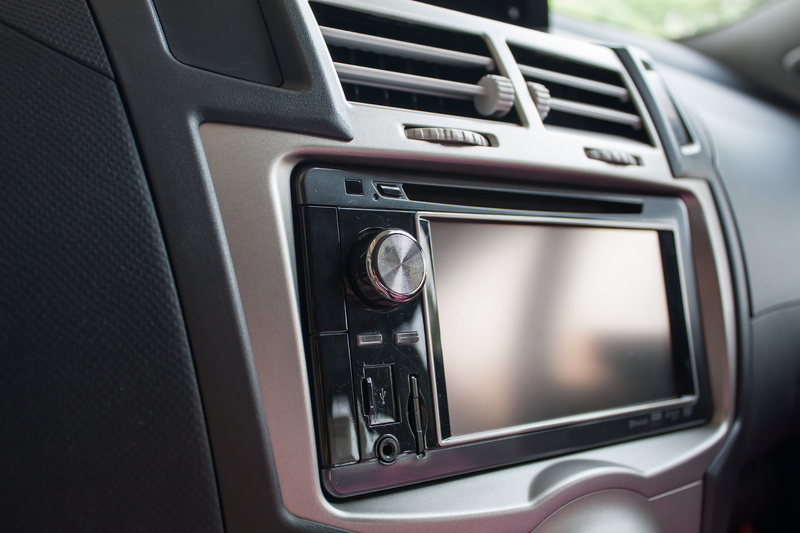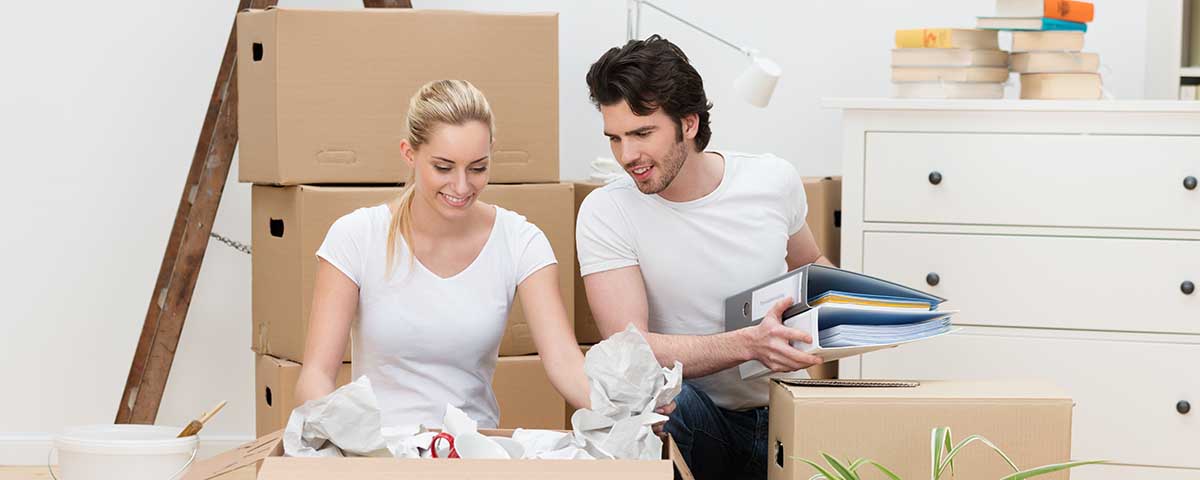Mastering the Art of Packing for an Efficient House Move
Posted on 20/05/2025
Mastering the Art of Packing for an Efficient House Move
Moving to a new home is an exciting adventure, but the process of packing up your life and relocating can be overwhelming without a solid strategy. By mastering the art of packing for an efficient house move, you not only streamline the shifting experience but also safeguard your belongings and reduce post-move stress. This article offers a comprehensive, step-by-step guide with timeless packing techniques, clever tips, and essential resources that will make your move efficient, organized, and even enjoyable.
Why Efficient Packing Matters for Your House Move
A well-planned packing strategy doesn't just save time--it also helps protect your belongings and cuts costs on moving supplies and transport. Efficient house move packing minimizes the risk of loss or damage and simplifies the unpacking process at your new destination. Whether you're relocating locally or moving to another city, optimized packing sets the foundation for a seamless transition.
Key Benefits to Proper Packing
- Reduced Stress: Knowing that everything is securely packed allows you to focus on settling into your new home.
- Time Savings: Minimal last-minute scrambling or searching for essentials.
- Cost Efficiency: Less risk of broken items or the need to replace missing belongings.
- Space Optimization: Packing strategically means fewer trips, which saves on transportation costs.

Step 1: Start with a Master Packing Plan
Success always starts with detailed planning. Before you touch a single box, create a master checklist and a moving inventory. These will serve as your roadmaps through each phase of the move, helping keep the process efficient and on target.
How to Create a Packing Timeline
- Begin by listing all rooms and major categories of possessions.
- Schedule deadlines for each task to avoid last-minute chaos.
- Assign specific packing goals for each week based on your moving date.
- Share your timeline with family members or housemates, so everyone is on the same page.
- Include jobs such as utility shutoff, address change, and cleaning duties.
Step 2: Declutter and Organize
Packing for a house move offers the perfect opportunity to declutter. The less you move, the easier (and potentially cheaper) your transition will be.
Practical Decluttering Tips
- Follow the Four-Box Method: Label four containers for Keep, Donate, Sell, and Dispose.
- Be ruthless; if you haven't used it in a year, let it go!
- Dispose of expired or hazardous items properly.
- Hold a garage sale or use online platforms to sell unneeded items for extra cash.
- Donate gently used goods to local charities.
Step 3: Gather the Right Packing Supplies
Having quality packing materials is critical for efficient house move packing. Don't scrimp on boxes, bubble wrap, or strong tape--sturdy supplies prevent breakage and make stacking easier.
Essential Packing Materials Checklist
- Sturdy cardboard boxes in various sizes
- Packing tape and dispenser for secure sealing
- Bubble wrap, packing paper, and foam sheets for delicate items
- Stretch wrap for furniture and electronics
- Permanent markers for labeling
- Color-coded labels or stickers for organizing
- Box cutters or scissors
- Resealable plastic bags for screws, bolts, and small hardware
- Specialty boxes (wardrobe, dish barrels, TV boxes) for valuables
Step 4: Smart Packing Techniques for Every Room
Packing room by room streamlines the process and ensures you don't get overwhelmed. Apply these room-specific packing tips to make your move more organized and protect your belongings.
Packing the Kitchen Efficiently
- Pack seldom-used china and small appliances first.
- Wrap plates vertically with bubble wrap--this reduces the risk of breakage.
- Bundle utensils together and secure sharp knives in guard sleeves or folded towels.
- Seal open containers and dispose of perishables.
- Use dish boxes with dividers for glassware and mugs.
- Label boxes "Fragile" and note contents clearly.
Packing Bedrooms for Quick Unpacking
- Use wardrobe boxes to transport hanging clothes wrinkle-free.
- Pack a suitcase with a week's worth of outfits and essentials.
- Keep bedding and pillows in large, clear bags for easy identification.
- Clearly label boxes by room and content to speed up settling in.
Living Room and Electronics Packing Tips
- Take photos of cable configurations for quick setup at the new home.
- Use original boxes for electronics when possible.
- Cushion lamps, artwork, and TVs with foam, blankets, or bubble wrap.
- Store remotes and cords in labeled bags and tape them to the corresponding device.
- Disassemble furniture if needed and keep all hardware in a bag taped to the item.
Packing the Bathroom and Laundry Area
- Sort health and beauty products and discard expired items.
- Pack toiletries in sealed plastic bags to prevent leaks.
- Securely tape cleaning chemicals and keep them upright during transport.
- Launder towels and linens before packing for freshness in your new home.
Step 5: Label, Inventory, and Prioritize
A common mistake when preparing for a house move is neglecting to label boxes and create an inventory. This step ensures efficient unpacking and helps locate essentials right after the move.
Proven Labeling Strategies
- Color code each room's boxes for easy visual sorting.
- Label the top and at least two sides of each box.
- Include a brief list of key contents on the label.
- Indicate "Fragile" and "This Side Up" when appropriate.
- Number boxes and cross-reference them with your master inventory list for tracking.
Step 6: Pack an 'Essentials' Box for Move Day
Nothing is more frustrating than arriving at your new house and not being able to find your basics. Prepare an "essentials" box or "open-first" kit containing everything you'll need for your first night and next morning.
Essentials Box Checklist
- Toiletries (toothbrush, soap, toilet paper)
- One set of bed linens and a blanket
- Basic eating utensils and paper plates
- Change of clothes and pajamas
- Phone chargers and important electronics
- Prescriptions and must-have medical supplies
- Snacks and bottled water
- Important documents, keys, and valuables
Step 7: Hire Movers or DIY?
One key decision during your move is whether to hire professional movers or go DIY. Professional services offer efficiency and physical labor, but if you prefer to be hands-on, enlisting supportive friends or family can be cost-effective.
What to Consider:
- Budget constraints and time available
- The distance of your move
- The volume and fragility of your items
- Your physical ability and available helpers
Regardless of your choice, setup transportation logistics well in advance, and provide helpers with clear instructions and a schedule to maximize efficiency.
Step 8: Final Moving Day Packing Tips
- Double-check all rooms, closets, and outdoor spaces for overlooked items.
- Ensure all boxes are securely taped and clearly labeled.
- Transport sensitive valuables and documents personally whenever possible.
- Stack boxes with heavy items on the bottom and fragile goods on top.
Maintain a positive attitude and open communication with your movers or helpers--teamwork makes any move smoother!
Step 9: Unpacking for a Smooth Transition
Unpacking is the last part of efficiently moving house. Begin with your essentials box, set up beds, and equip the kitchen and bathroom so you can function comfortably while you settle in.
Unpacking Prioritization Tips
- Start with rooms that make your home functional (bedroom, bathroom, kitchen).
- Refer to your inventory and room-color codes to quickly identify boxes.
- Flatten and store used boxes for possible reuse or recycling.
- Take your time--unpack systematically to avoid clutter and overwhelm.
Bonus: Expert Packing Hacks for an Efficient Home Move
- Use towels and linens to wrap breakables, saving on bubble wrap.
- Pillowcases can double as bags for shoes or delicate lampshades.
- Keep dresser drawers full (and secure with plastic wrap) for easy moving.
- Photograph intricate setups (electronics, gallery walls) before disassembling.
- Store small hardware in labeled baggies and tape them to the corresponding item.
- Reserve moving boxes specifically for immediate-use items, like snacks and cleaning supplies.
- Don't overpack boxes: Keep the weight under 50 pounds to prevent breakage and injuries.

Frequently Asked Questions on Efficient Packing for House Moves
1. How far in advance should I begin packing for a house move?
Start packing at least 4-6 weeks in advance, beginning with non-essentials. The earlier you start, the less stress you'll experience as moving day approaches.
2. What is the most efficient way to pack clothes for moving?
Use wardrobe boxes for hanging clothes and roll or fold others into suitcases. Vacuum bags are great for saving space on bulky items.
3. How can I prevent breakage during my move?
Wrap fragile items individually with bubble wrap or towels. Place heavier items at the bottom of boxes and use dividers for glassware and dishes. Clearly label any box containing breakables with "Fragile" and stacking instructions.
4. What's the best way to label moving boxes?
Develop a consistent labeling system using color coding, room names, and a contents list on each box. Reference your labeling in a master inventory document for seamless unpacking.
5. Should I hire professional packers?
Professional packers offer speed and expertise. If you have a large home or valuable, delicate items (antiques, artwork, pianos), pros may be a worthwhile investment for a safe and efficient move.
Conclusion: Packing Success for an Efficient House Move
Mastering the art of packing for an efficient house move is all about planning, organization, and execution. By starting early, decluttering, using the right supplies, and following systematic, room-by-room approaches, you ensure a hassle-free relocation. Remember to label diligently, pack an essentials kit, and capitalize on expert hacks to make your new house feel like home sooner. Investing effort in your packing strategy pays off with peace of mind and a smooth transition--setting the tone for happy living in your new space.
Ready to start packing like a pro for your next house move? Bookmark this guide for reference, and share it with friends or family planning their own moves!

 request quote
request quote





